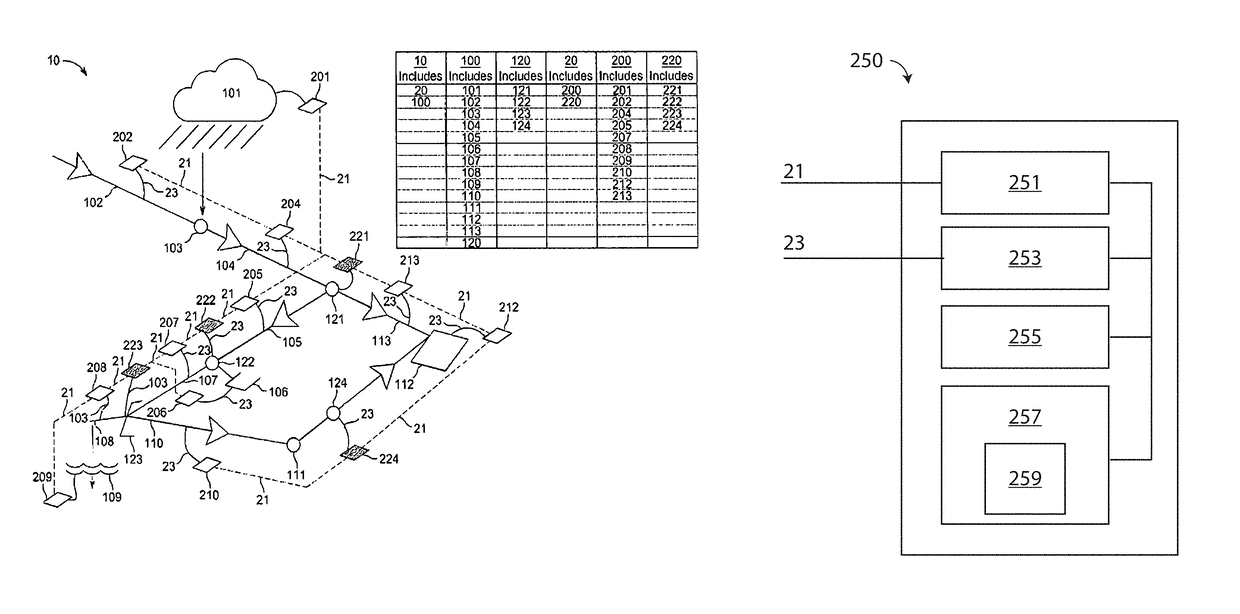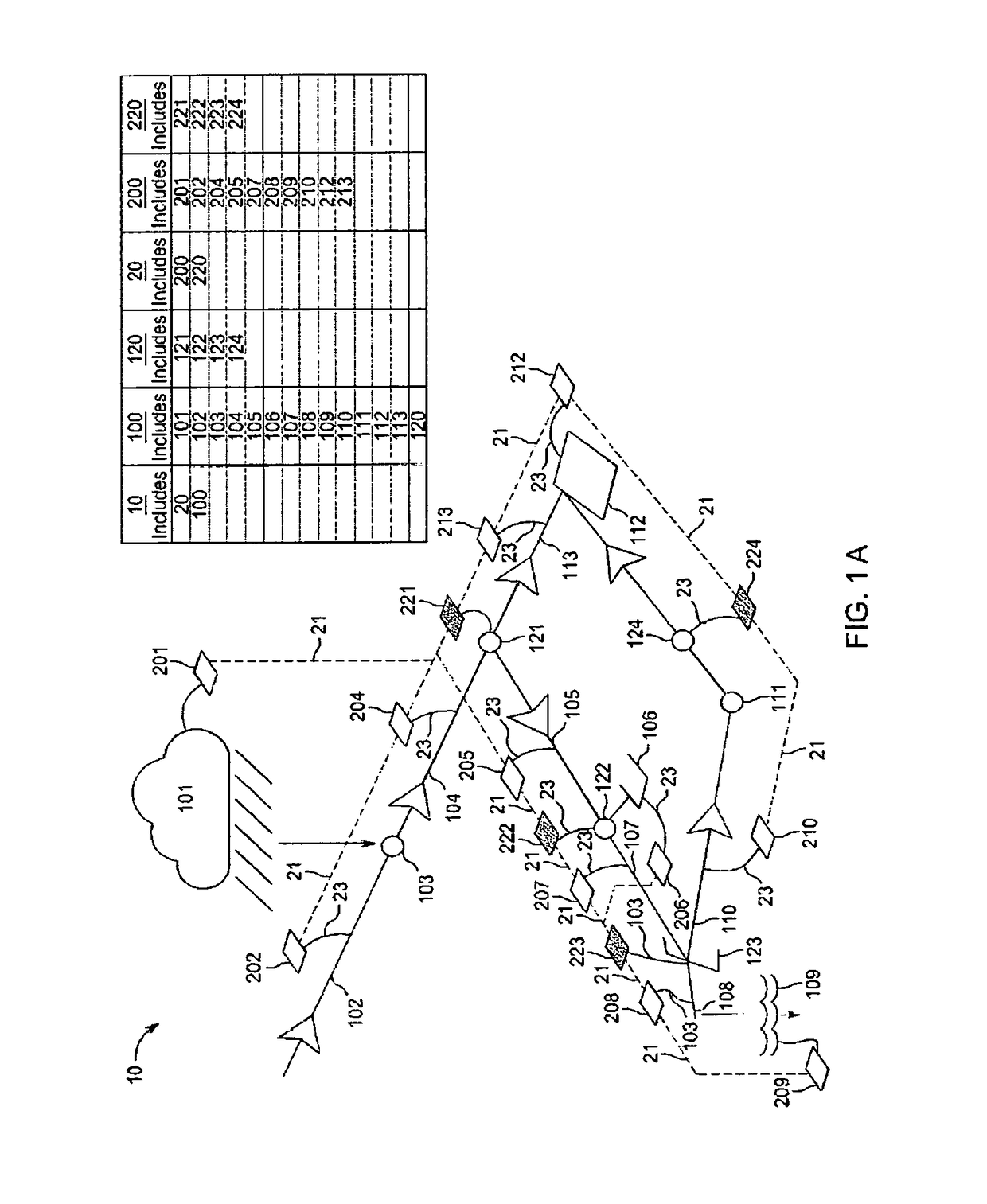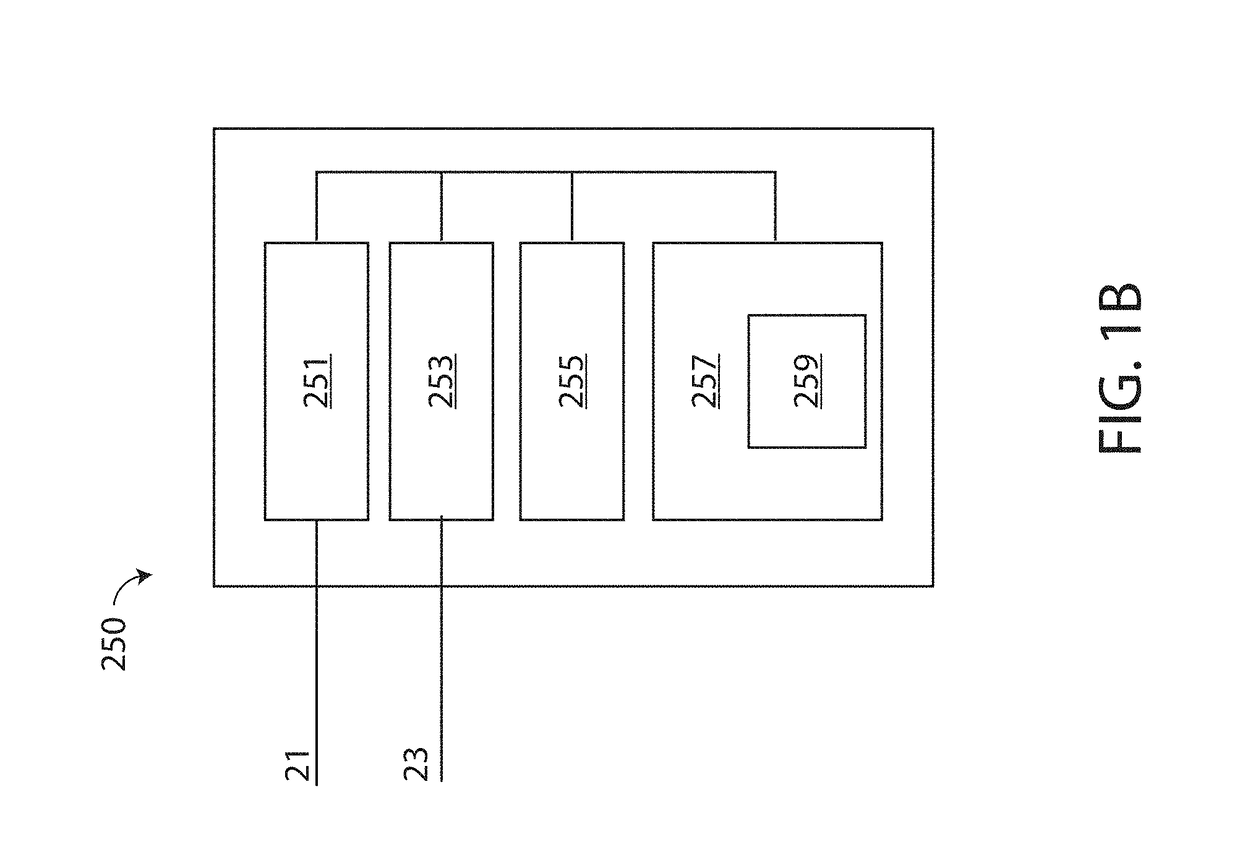System and method for agent-based control of sewer infrastructure
a technology of agent-based control and sewer infrastructure, applied in adaptive control, computer control, instruments, etc., can solve problems such as street flooding, basement flooding, and sewer system not optimized, and achieve the effects of reducing complexity of algorithm, simple algorithm execution, and resilience to component failures
- Summary
- Abstract
- Description
- Claims
- Application Information
AI Technical Summary
Benefits of technology
Problems solved by technology
Method used
Image
Examples
example 1
[0070]FIG. 5 is an illustration of a portion of a sewer system 500 that includes several trunk lines 501, 502, 503, and 504 each ending in a corresponding controllable gate 511, 512, 513, and 514. An interceptor line 520 receives flows from gates 511 and continues as interceptor 521, which receives flows from gate 512 and continues as interceptor 522, which receives flows from gate 513 and continues as interceptor 523, which receives flows from gate 514 and continues as interceptor 524, which then provides wastewater to a wastewater treatment plant 540. In addition, gates 511, 512, 513, and 514 each have a corresponding CSO outfall 531, 532, 533, and 534. Control gates 511, 512, 513, and 514 are controlled by a corresponding control agent 551, 552, 553, and 554, interceptors 521, 522, 523, and 524 have a corresponding agent 571, 572, 573 and 574, CSO outfalls 531, 532, 533, and 534 have a corresponding agent 561, 562, 563, 564, and wastewater treatment plant 540 has a corresponding ...
example 2
[0075]FIG. 6 is a plan of a sewer system 600 in which the ABRTC system was implemented. FIG. 6 shows control agents 601, 602, 603, 604, 605, 606, 607, 608, and 609 on an interceptor line 620 which each correspond to a CSO diversion structure (not shown) that has a CSO outfall at the noted location, and where each controlling agent is generally similar to control agents 220, FIG. 6 also shows four supplying agents 611, 612, 613, and 614, which each measure a water level in the corresponding asset. At any time, supplying agents 611, 612, and 613 determines a local virtual cost and communicates the virtual cost to all control agents upstream from it, but not upstream from another supplying agent. Each supplying agent 601, 602, and 603 also communicates the virtual cost calculated by that agent to the most immediate upstream supplying agent. Thus, for example and as show with arrows, supplying agent 614 reports a virtual cost calculated by the ABRTC algorithm of supplying agent 613 to c...
example 3
[0078]FIG. 8 is an illustration of a single sewer system 800 that includes two wastewater treatment plants: WWTP1801 and WWTP2803. A control structure 805 has the ability to divert flow from a drainage basin 809, through sewer line 807, from WWTP1801 to WWTP2803. WWTP1801 is located near control structure 805, and thus there is little time delay between the actuation of the control structure and the arrival of wastewater at WWTP1. WWTP2803 is located some distance away, and any action by the control structure 805 reaches WWTP2 2 hours later through sewer line 807. Control is aggravated by the fact that WWTP2 also receives water from uncontrolled basin 809. Without predictive information on the flows that will arrive from the uncontrolled basin, WWTP2803 may be overwhelmed or underutilized and corrective actions would take 2 hours to take effect.
[0079]To address the time delay, a Predictive ABRTC algorithm is developed as follows. First, a time-shift transformation is performed, as i...
PUM
 Login to View More
Login to View More Abstract
Description
Claims
Application Information
 Login to View More
Login to View More - R&D
- Intellectual Property
- Life Sciences
- Materials
- Tech Scout
- Unparalleled Data Quality
- Higher Quality Content
- 60% Fewer Hallucinations
Browse by: Latest US Patents, China's latest patents, Technical Efficacy Thesaurus, Application Domain, Technology Topic, Popular Technical Reports.
© 2025 PatSnap. All rights reserved.Legal|Privacy policy|Modern Slavery Act Transparency Statement|Sitemap|About US| Contact US: help@patsnap.com



